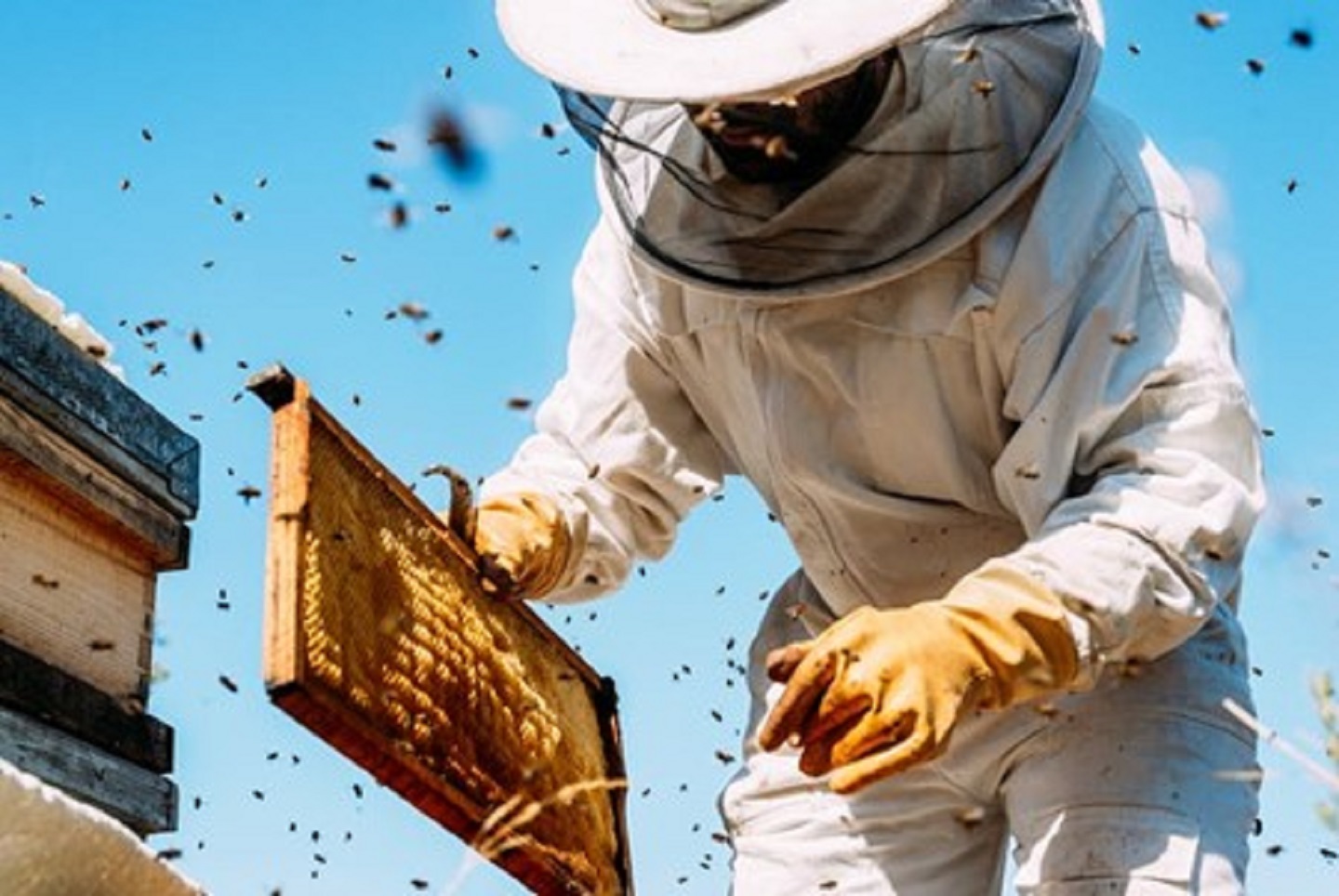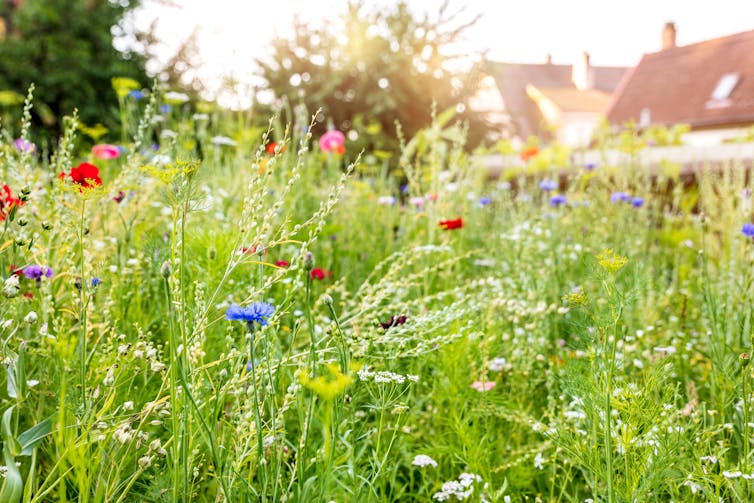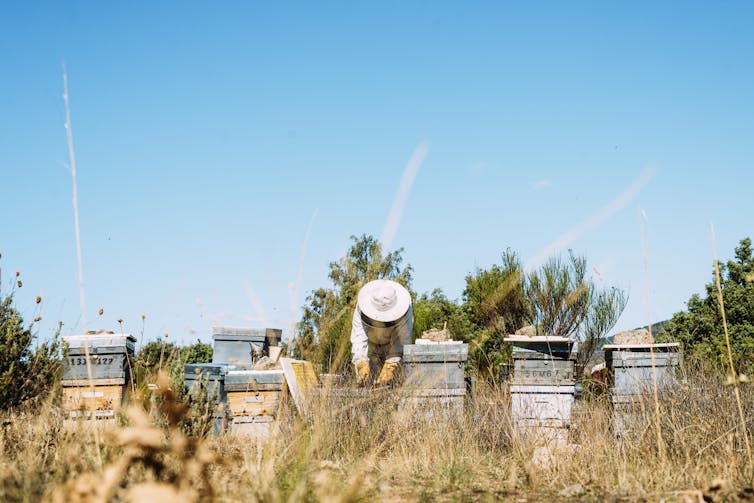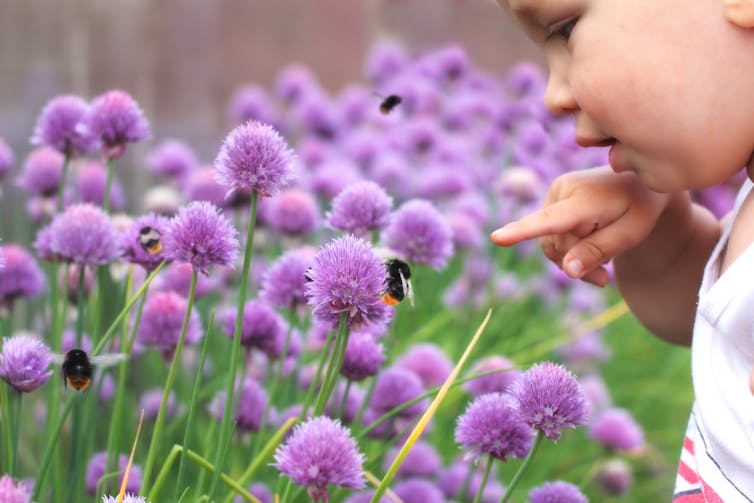Gwersi bywyd gan wenynwyr - stopiwch dorri'r lawnt, peidiwch â phalmantu'r dreif a dod i arfer â chwilod yn eich salad

santypan/Shutterstock
29 Gorffennaf 2021
Mewn erthygl yn The Conversation, mae Dr Siobhan Maderson o’r adran Adran Daearyddiaeth a Gwyddorau Daear yn trafod y prif wersi mae hi wedi dysgu o’i hamser yn ymchwilio ac yn gweithio gyda gwenynwyr.
For many people, the past year has led to an increased appreciation for our fragile natural world. This is important because, alongside COVID, we are also facing a global climate and biodiversity crisis.
A recent report by IPBES (the intergovernmental science-policy platform on biodiversity and ecosystem services) highlighted enormous pressures on land and marine ecosystems and concluded that more than a million plant and animal species are at risk of extinction. The authors call for fundamental changes to how we all live, to reverse these existential threats.
One recommendation from the report is that we should listen more to Indigenous people and local community knowledge, and learn from their relationship with the natural world as a way of solving environmental crises. This makes a lot of sense to me, because as my research and interviews with beekeepers has found, beekeeping changes how people see and relate to their environment.
Beekeepers talk of “seeing like a bee”. One beekeeper I spoke with noted that “part of the psyche of people who work with insects is that they are very observant, and passionate about their environment”. This passion leads many beekeepers to change parts of their lives to better help bees and the wider environment.
Here are the main lessons I’ve learned from my time spent researching and working with beekeepers.
Go wild in the garden
Beekeepers recognise that an untidy garden is a wildlife haven and advise letting a little mess into our outdoor spaces. Some beekeepers told me how they’ve stopped mowing their lawns altogether.
This approach is encouraged by scientists, along with the charity Buglife, which is developing a national network of B-lines – insect pathways through the UK’s towns and countryside, that are rich in wildflower forage and habitat. Beekeepers will also make sure nutritious plants are available throughout the year – including Snowdrops, Lavender and Asters – for their bees and other pollinators such as bumblebees, hoverflies and wasps. Ivy is also an important late-season forage source, so don’t pull it down.

But be aware of “greenwashing”. Plants may be advertised as good for bees when they have been treated with hazardous pesticides – so make sure you check how they’ve been grown. In my experience, UK beekeepers avoid using any chemicals in their gardens, as they are all too aware of the damage they cause. In many other countries, and in the EU, domestic and municipal use of garden chemicals has been banned.
Whatever you do, don’t pave over your front garden or put down artificial turf. Both of these lead to less habitat for wildlife. If you must park your car on a hard surface at home, add in climbing plants and hedges to absorb CO2 and provide forage for insects.
Learn about your neighbourhood
Beekeepers often work in one area for years – sometimes even generations. These years of experience in one place show them what’s growing, and what’s living in their area, and what has changed over time.
Strengthening our connection to – and our knowledge about – our local area has lots of advantages. It’s good for our mental health and happiness and can help us know what’s happening in our local environment – whether that’s a garden, park, woodland, or beach.

Phenology – knowing the seasonal cycles of plants and animals – provides valuable information for scientists studying the effects of climate change. You don’t need to keep bees to learn these things. Anyone can start collecting, and contributing information about local areas by recording sightings of flora and fauna you may see on your daily outings.
Pay attention
Beekeeping is often a starting point for deeper learning about the environment. Some beekeepers, for example, go on to learn about botany, which helps them know what to plant to provide food and habitat for their bees.
Unlike beekeepers, many of us aren’t really aware of the differences between honeybees and other species of bees. Many bee species are solitary, and have smaller foraging ranges. Understanding the needs of different species can help make sure the environment is healthy for all pollinators – not just honeybees.

In some parts of the UK, particularly urban areas, there are now too many honeybees, and not enough forage for them, or the wider pollinator community. Some beekeepers are now decreasing the number of colonies they keep, to support all pollinators, by decreasing pressure on environmental resources.
Think global, act local
If we want to live in a world that is good for pollinators, as well as the rest of us, big changes are needed in our environment, and our food system. This is why many beekeepers change their diet and their shopping, eating more locally grown vegetables that aren’t treated with pesticides.
Being willing to buy fruit and vegetables that may have the occasional insect living in it is better for us and for nature. To live more harmoniously with the natural world, we need to relax about larvae in the lettuce and slugs in the spinach.![]()
Mae'r erthygl hon wedi ei hailgyhoeddi o The Conversation dan drwydded Creative Commons. Darllenwch yr erthygl wreiddiol.



